Homeowners > Cavity Insulation

The most cost effective way to insulate the walls of your home is through Cavity Wall Insulation. There are over 6 million houses Cavity Insulated in the UK alone.
- Cavity Wall Insulation is the filling of the gap between the two skins of masonry forming the external wall with an impervious or self draining insulation material.
- Each installation is covered by an independent 25 year CIGA guarantee.
- The installation takes no longer than a day to carry out.
- BCA Insulation is licensed to use either a Whitewool system or White Bead system, both of which are tried and tested systems.
The process for installing cavity wall insulation is straightforward and hassle-free for you. As a guide, the following steps take place:
Pre Installation

In accordance with the requirements of the British Board of Agrement, each property must be surveyed to ensure its compliance with the system proposed.
This is carried out by a BCA Surveyor who will assess the property including an examination of the cavity using a small bore scope. Sketches of the elevation and a plan will be taken to note the details of the property and any obstacles. The heating system and flues will also be detailed to check on gas safety in connection with cavity wall insulation.
On completion a letter detailing the benefits and savings and confirming our price will be issued.
Installation (1 day maximum)

At a date and time agreed, the installation team will arrive and the team leader will introduce him self and go over the process.
The location of flues and any pre-noted peculiarities will again be checked internally and spillage tests and observations may be carried out on gas or solid fuel burning appliances.
Holes will be drilled in the outside skin in compliance with the drilling pattern.
The insulation material is injected through a nozzle under air pressure from a blowing machine in the back of the BCA van.
During the installation test boxes are carried out to check the density being achieved.
On completion of an area the holes are plugged by hand using mortar dyed to match the existing wall finish. If painted then a masonry paint will again be specially mixed to match and, if rough casted, then grit will be bedded onto the filled hole.
Post Installation

Job done, the team will blow the dust off the walls and clean up the ground around the base of the wall.
Sub-floor vents will be checked and the Team Leader will re-test/re-check gas and solid fuel burning appliances. A check on the material used against that estimated is made as a second quality check.
A customer care sheet is completed by the client and the team leave with little visual evidence that they were ever there.

reduce your energy bills
Take action now to reduce your annual energy costs. The results can be striking.

our green credentials
We've always recognised the need to be responsible with our use of energy and resources.





